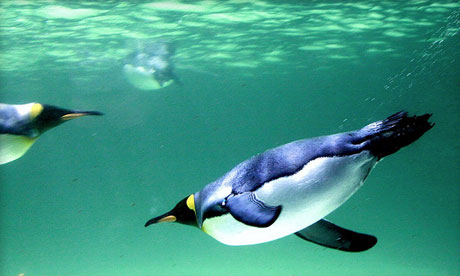
There’s more to underwater photography than keeping your camera dry. Here we dive in to get the best shots in the big blue
Recording your travels beneath the waves needn’t mean investing in an underwater camera – special waterproof housings are available to fit anything from the smallest compact snapper to the largest professional SLR. There are two types of housings: hard cases and flexible bags. Choosing which one is best for you depends on how you travel and how deep you intend to go.
A hard housing (below, to right) gives you access to the controls on your camera, but each is designed for one specific model of camera and they can be expensive (prices range from £100 for a small compact to £1,000 for a digital SLR). Hard cases for compact cameras are quite small, but those for DSLRs are large and heavy, so are less suitable for travel.
Flexible plastic cases (right), such as those made by Ewa-marine come in various sizes to accommodate most compact and SLR cameras, including attached flashes. They are relatively cheap (about £50 for compacts and £150 for SLRs), pack flat and are very light. But you have to access the camera through the plastic, and the housings compress at depth, so are more suited to shallow dives and snorkelling.
The biggest problem with underwater photography isn’t, as you might imagine, keeping your camera dry – it’s the light. Water absorbs the red wavelengths of light and transmits the bluer wavelengths. Pictures taken just below the surface will have a pronounced blue cast; by 9m down they will be completely blue. Water also reduces the overall light levels, requiring longer exposure times with a greater chance of subject blur.
There are a number of ways to get round this. One is to shoot only in the first 50cm of water; another is to use a flash. Shooting at the top of the water might sound restrictive, but you’ll find you are more likely to get an evocative dappling of the sun at this depth. You can also shoot upwards and get the underside of the water’s surface in the picture, which can look dramatic. On a practical level, diving (or even snorkelling) at this depth is less challenging, allowing you to spend more time thinking about your pictures than your diving.
Dive any deeper and you may need flash. Many cameras have a built-in flash, but the underwater output from this will be far too low to light a picture more than a few centimetres away. Worse, you will suffer from backscatter – the flash illuminating floating debris and air bubbles, which appear in your picture as out-of-focus light blobs.
To minimise this effect you will need to use a waterproof, off-camera flash. This is connected to the camera and housing, and held away from the camera on long arms. This gives a more pleasing, non-face-on flash and also avoids backscatter. The downside is that a housing and flash unit is expensive and ungainly. You don’t want to even think about trying this set-up unless you are an experienced diver.
The refraction of light in water will change the focal length of your lens, making a wide-angle lens behave more like a standard, while a 35mm lens will work like a 50mm lens underwater. You should use a more wide-angle lens than you might imagine, but be careful it is not cut off by the housing to give a black vignette effect.
Autofocus can be very useful when diving, as manual focussing can be very tricky through a diving mask and a housing. I tend to use a setting that uses a wide array of sensors, set to focus on the nearest object. I also use single not continuous focus, so I know the picture will be in focus before the camera will take the picture.
Digital cameras are exceptionally good for underwater photography. The LCD screen can really help with composition and – with a large memory card – you can take hundreds of pictures before having to surface. Digital also gives you greater control over the colour balance, allowing you to correct any blue cast to your pictures on a computer.
Start by taking the empty case down to your diving depth to check for leaks. Keep it out of sunlight, rinse it well in fresh water after use and press all the controls to stop salt crystals sticking.
For photographs from the surface to depths of 15m, alter the ‘exposure compensation’ setting (EV+/-) to -1, -2 or even -3. This will help keep the ocean looking a rich, deep blue, not pale and washed out.
Switch the ‘white balance’ to ‘manual’ and, at the deepest point of your dive, put a white slate in front of the shutter to calibrate the white balance, repeating as you ascend. If you don’t have a ‘manual’ setting use ‘cloudy’ to get rid of the blue cast and warm up your photos.
The ‘macro’ function helps to ensure sharp close-up shots. Get within 30cm of your subject for the flash to work at its best and to avoid lighting those nasty in-water particles.
Remember: subjects are magnified underwater, making them appear closer than they are. Get as close as you can, but always respect the reef and never grab onto any coral for the sake of a great picture.